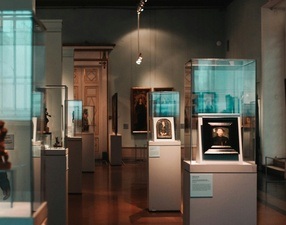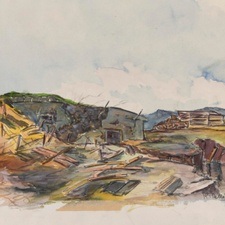Stauffenberg Erinnerungsstätte
In the organizer's words:
Who was the man who wanted to kill Adolf Hitler and why is he so controversial today? How did the assassination attempt take place? How was the Nazi terror regime to be eliminated and who was involved in the attempted coup? What happened on July 20, 1944 at the nerve centers in Europe? The Stauffenberg Memorial in the Old Palace in Stuttgart is dedicated to these questions in a multimedia exhibition.
"Attentat.Stauffenberg" is a new type of memorial site: It focuses on the biography of Hitler assassin Claus Schenk Graf von Stauffenberg and the attempted coup of July 20, 1944, with an art installation exploring the failed act, the dramaturgy of events and the tragedy of failure. The museum also displays some of the rare original objects belonging to Claus Schenk Graf von Stauffenberg that have survived. Pieces such as his cello, his honorary sabre or a bronze head as well as historical photos span the arc from his childhood and youth in Stuttgart to his death as a resistance fighter against National Socialism.
The exhibition at the Haus der Geschichte Baden-Württemberg also illustrates how differently Stauffenberg and the assassination attempt were and are viewed in different times, by different groups and in different countries. Media stations allow visitors to actively experience the contents of the exhibition.
The assassination and the attempted coup in multimedia form
On July 20, 1944, Stauffenberg took explosives with him to the Führer's Wolf's Lair headquarters near Rastenburg (now Kętrzyn, Poland). He wanted to kill Hitler during a meeting and overthrow the Nazi regime. As an assassin and key figure in the attempted coup, he played a central role on July 20, 1944.
Stauffenberg did not act alone. The revolutionary movement consisted of a broad network of personalities from different political and ideological camps. A media station makes the diverse connections between the co-conspirators visible and enables biographical research.
The drama of the events on July 20 at various locations in the German Reich and in occupied territories can be traced on an interactive multi-touch media table - from Stauffenberg's flight to the Wolf's Lair in the morning to the final defeat at night. What happened that day in Berlin, Prague, Paris or Stuttgart?
Exhibition on the life of Stauffenberg
He risked everything and lost everything. Before Claus Schenk Graf von Stauffenberg turned against Hitler and paid for it with his life, his biography was closely linked to Stuttgart. He grew up there in the Old Palace when his father was Chief Court Marshal to the King of Württemberg.
Stauffenberg's military career began in the first German democracy. He made a career as a senior officer in the National Socialist Wehrmacht. But from the summer of 1943, he became the driving force behind the subversion movement against the Nazi terror regime. He was shot after the failed assassination attempt. The exhibition shows Stauffenberg's actions during the National Socialist era and his transformation from a committed officer loyal to the system to a key figure in the subversion movement.
This content has been machine translated.













